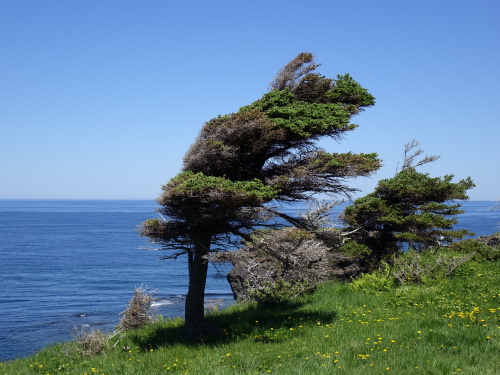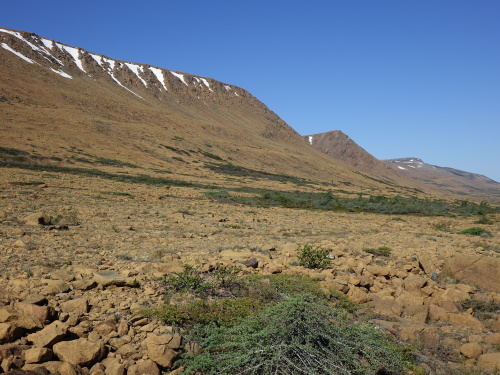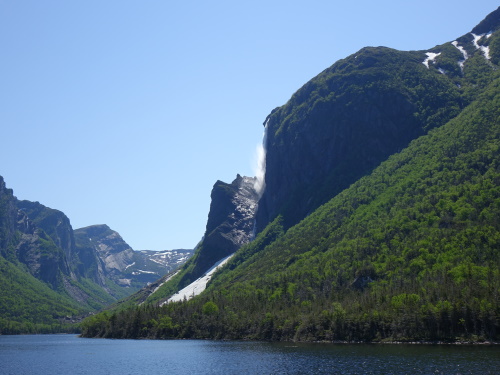Blog WHS Visits
WHS #797: Gros Morne NP
Newfoundland’s Gros Morne National Park isn’t very well-known and doesn’t receive as many visitors - both among the general population and within our community - as comparable parks in the USA such as Olympic NP. When I visited in mid-June, there were usually only one or two cars at the viewpoints and trailheads parking lots. In 2018, it saw about 39,000 visitors. By comparison, Olympic NP counted 2.72 million….
The park has a large variety of landscapes, ranging from glaciers and fjords to freshwater lakes, tuckamore forest and coastal cliffs. I spent 2.5 days there: driving around while enjoying the views, hiking some of the trails, and doing the Western Brook Pond boat tour. From a logistical view, the park has a northern and a southern zone, separated by Bonne Bay. During my preparations, I enjoyed the lovingly detailed guidebook ‘Gros Morne National Park’ by Michael Burzynski.
In the southern zone, I did the Tablelands hike and the Green Gardens hike. Driving up there, Tablelands draws the attention right away: it’s a barren, brown mountain range among the surrounding forested ones. It looked stunning with the still remaining bits of snow and ice on its top and flanks. Its origins are fascinating too and it is an essential part of the OUV of this WHS: it is where deep ocean crust and the rocks of the earth's mantle lie exposed after having been uplifted through the action of plate tectonics. An easy, 4km return path with information panels gets you close. There is no ‘real’ soil here, only a few specialist plant species such as pitcher plants can survive.
The Green Gardens hike is a fine combination with Tablelands, as it has totally different scenery while still being only 5km or so away. This is a more strenuous hike (labeled ‘medium’, 9km return). You climb across a ridge and then descend towards the coast. Along the way a tuckamore forest provides shelter from the sun: these tuckamore trees are another signature feature of this park. They are spruce and fir trees that are stunted by the winds and winter weather, so they lean over to one side. The trail ends at a long stretch of coastal meadows, with views of sea stacks and fine areas for a picnic.
The northern zone is dissected by Highway 430, which is a nuisance as it comes with speeding trucks and other through traffic. I did a couple of short walks here, the Berry Head Pond trail (a loop around a lake) and Lobster Cove Head (with a lighthouse and more tuckamore trees). The main excursion here though is the Western Brook Pond Tour. This is the single most popular thing to do in the park: you need to pre-book weeks beforehand and when I arrived at the car park, 2 buses were just unloading their (elderly) passengers. It’s a 3km walk from the parking to the dock. The tour was a bit too cheesy for my taste and the boat very full, but the landscape again did not disappoint. Western Brook Pond is an inland or freshwater fjord since being cut off from the sea. I found the experience very similar to Norway’s Geiranger Fjord, with waterfalls, oddly shaped rocks and towering cliff walls (up to 700m high) along the route.
The park earned my 4 stars easily, but there were some disappointments as well. The main highway that cuts through it, as mentioned above. The park also lacks a certain wildness and sense of adventure, the visitor experience has been organized so well that it feels tamed down (there’s always a boardwalk to prevent wet feet). Also, Newfoundland is low in mammal wildlife and this park is no exception. There are some 400 native Caribou still roaming around and almost 10 times as many Moose, which were introduced from the mainland in the 19th century. I saw neither species during my stay here, although my start had been promising as at the Gros Morne mountain viewpoint, another traveller pointed out a bear moving about on a meadow high up. It could only be seen via binoculars.
Els - 19 June 2022


